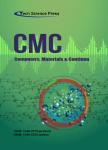COVID19 Classification Using CT Images via Ensembles of Deep Learning Models
作者机构:Department of Computer ScienceHITEC University TaxilaTaxila47080Pakistan Department of Computer Science and EngineeringSoonchunhyang UniversityAsanKorea College of Computer Engineering and SciencesPrince Sattam Bin Abdulaziz UniversityAl-KhrajSaudi Arabia PRTTLWashington University in Saint LouisSaint LouisMO 63110USA Department of Information SystemsFaculty of Computers and Information SciencesMansoura UniversityMansoura35516Egypt Department of Computer ScienceFaculty of Computers and Information SciencesMansoura UniversityMansoura35516Egypt
出 版 物:《Computers, Materials & Continua》 (计算机、材料和连续体(英文))
年 卷 期:2021年第69卷第10期
页 面:319-337页
核心收录:
学科分类:08[工学] 0812[工学-计算机科学与技术(可授工学、理学学位)]
基 金:This research was supported by X-mind Corps program of National Research Foundation of Korea(NRF)funded by the Ministry of Science,ICT(No.2019H1D8A1105622) the Soonchunhyang University Research Fund
主 题:COVID19 preprocessing deep learning information fusion firefly algorithm extreme learning machine
摘 要:The recent COVID-19 pandemic caused by the novel coronavirus,severe acute respiratory syndrome coronavirus 2(SARS-CoV-2),has had a significant impact on human life and the economy around the world.A reverse transcription polymerase chain reaction(RT-PCR)test is used to screen for this disease,but its low sensitivity means that it is not sufficient for early detection and *** RT-PCR is a time-consuming procedure,there is interest in the introduction of automated techniques for *** learning has a key role to play in the field of medical *** most important issue in this area is the choice of key ***,we propose a set of deep learning features based on a system for automated classification of computed tomography(CT)images to identify ***,this method was used to prepare a database of three classes:Pneumonia,COVID19,and *** dataset consisted of 6000 CT images refined by a hybrid contrast stretching *** the next step,two advanced deep learning models(ResNet50 and DarkNet53)were fine-tuned and trained through transfer *** features were extracted from the second last feature layer of both models and further optimized using a hybrid optimization *** each deep model,the Rao-1 algorithm and the PSO algorithm were combined in the hybrid ***,the selected features were merged using the new minimum parallel distance non-redundant(PMDNR)*** final fused vector was finally classified using the extreme machine *** experimental process was carried out on a set of prepared data with an overall accuracy of 95.6%.Comparing the different classification algorithms at the different levels of the features demonstrated the reliability of the proposed framework.




